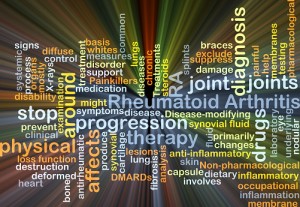Lose Weight > Common Sense To Lose Weight > Common Sense Article > Type 2 Diabetes Symptoms -- Can You Recognize Them?
Type 2 Diabetes Symptoms -- Can You Recognize Them?
The symptoms of low blood glucose go away shortly after you eat food containing carbohydrate (grains, starchy vegetables, beans, fruit, milk, sugar or combination of these). Symptoms will be described by dividing them into those usually experienced at differing blood sugar levels. The symptoms can overlap, however, or vary from person to person.
Mild low blood glucose can be experienced when your blood sugar level has dropped below 70 mg/dL (or even higher if your blood sugar has been elevated for quite some time). Symptoms experienced are usually described as sweating, shakiness, hunger, dizziness, blurred vision, and/or feeling anxious or just not being able to concentrate or focus on a project. Most people concentrate on looking for food. Some even say they would kill for food as the symptoms progress.
Moderate low blood glucose is defined as blood sugar that has dropped below 40 mg/dL. Symptoms are anything but moderate, however. Symptoms include behavior change that is noticeable by others, inability to concentrate, confusion, irritability, unsteadiness, slurred speech, muscle twitching and personality changes. Many may not even realize they need food as they get more confused. If you notice these symptoms in others, offer juice or regular soda pop immediately if the person is still able to follow your directions to drink it.
Severe low blood glucose symptoms appear when blood sugar is usually below 20 mg/dL and include seizure, stroke, coma and death. These people need emergency help. If you experience someone in this state, call 911 immediately.
Symptoms and problems associated with high blood glucose can result in organ damage over time if not treated to get blood sugar levels normalized. These symptoms include frequent infections and slow healing of wounds to feeling tired, being more hungry or thirsty than usual, feeling tired or sleepy, having blurred vision or other eye problems, having a heart attack or stroke or developing kidney disease or nerve damage. The best tool available to diabetics today to monitor their blood glucose level is a glucometer. Whenever symptoms are noticed or one does not feel right it is wise to check blood glucose to be sure it is not either low or high.
Noticing of unusual body symptoms and relaying them to your health care provider is important to diagnosing diabetes and to controlling blood glucose levels after diagnosis. Mentioning those symptoms may result in quicker diagnosis and treatment. A diabetic is also more susceptible to high blood pressure and high blood lipids (cholesterol and triglyceride). For this reason your health care provider may do testing to determine if they are normal. Abnormal cholesterol, triglycerides or high blood pressure increase the risk of organ damage even more. Coupled with diabetes these abnormalities are a triple whammy to health decline. Each needs to be checked for and treated, if present, to help maintain health and prevent disease.
Related Articles
-
Weight Loss After Menopause - Avoid These Foods
The type of food you eat can be critical to achieving weight loss afte
-
Detoxing = weight loss?
Although you may initially lose weight from fasting, mainly water. You
-
Why Change Doesn't Stick
Did you make a resolution last New Years? Was it to lose ten pounds
-
Weight-Loss Bullshit
So Im wearing my Exercise Scientist hat today. And my Psychologist
-
Losing Weight Is Not Always Healthy
50% of Americans are overweight. This is
-
Lose The Weight The Healthy Way
High-protein diets may not be as bad as they say after all especially
- DON'T MISS
- 4 Tips For Fast Fat Loss Part III
- Straightforward Steps To Dropping Weight
- Food Intolerance And Low Carb Diets
- Emotional Eating Disorder: Causes, Treatment As Well As Symptoms
- How To Prep Your Home For Maximum Weight Loss
- Weight Loss Keep It Simple
- Your Ultimate Guide to Alleviating Anxiety and Losing Weight With Tea!
- Requirements For Patients Of Gastric Bypass Surgery
- 10 Ways To Lose Your Gut For Good
- How Orange County Boot Camp Helps Shed Off Your Excess Weight




